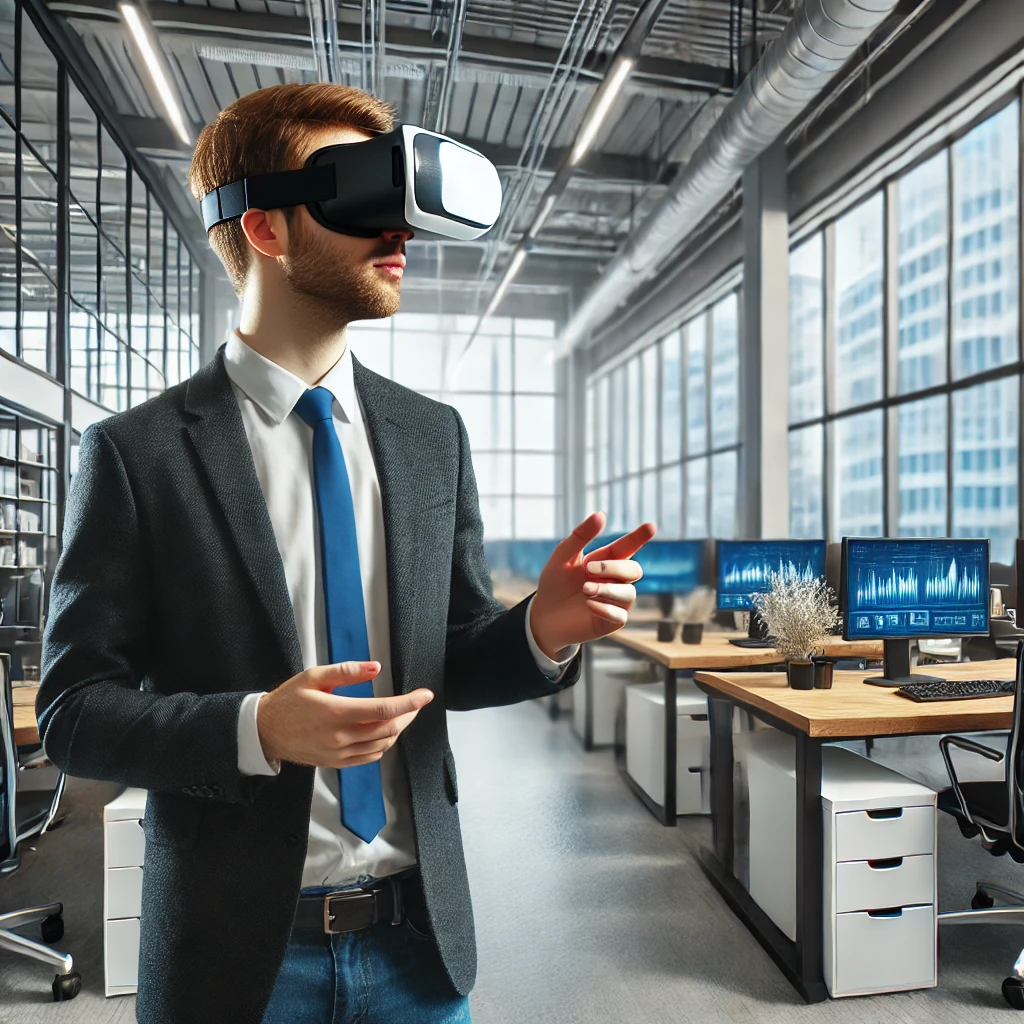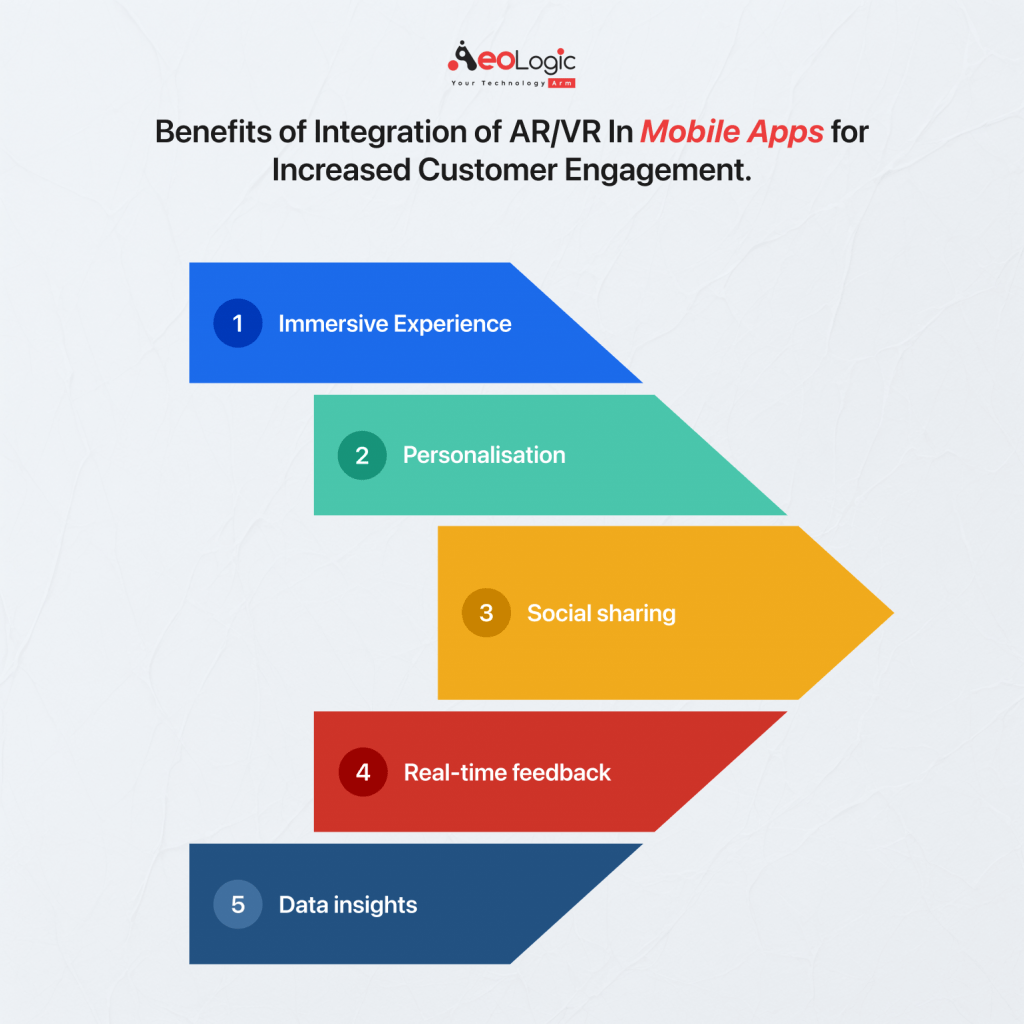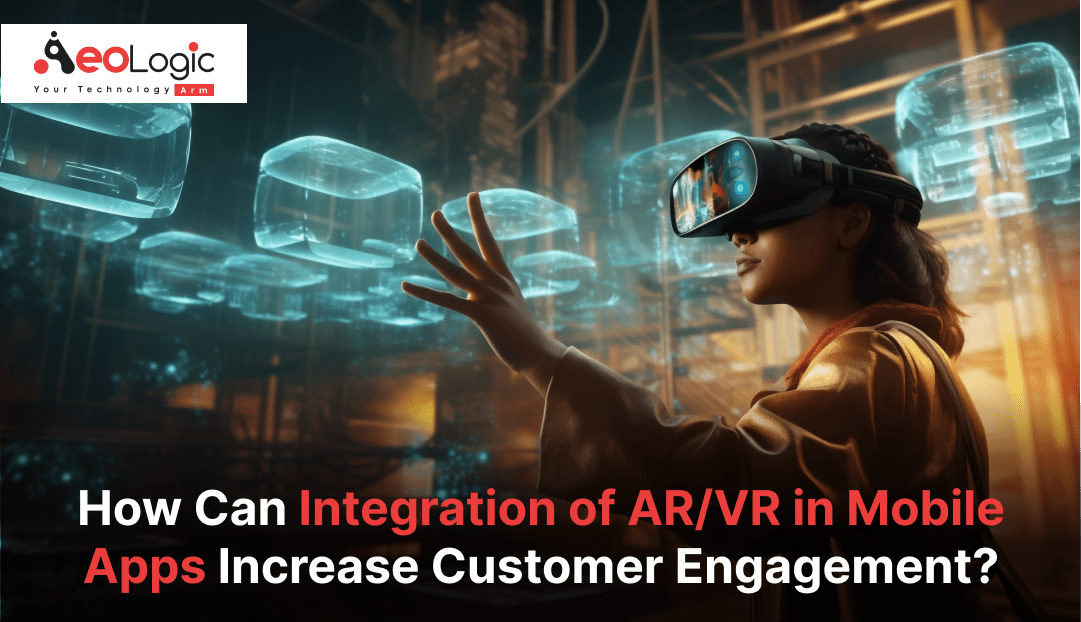Mobile apps are one of the most trending things that everyone develops for their businesses and sectors. The global mobile application market size was valued at USD 252.89 billion in 2023 and is projected to grow at a compound annual growth rate (CAGR) of 14.3% from 2024 to 2030. It encompasses applications across various sectors including gaming, health and fitness, music and entertainment, social networking, retail, and e-commerce, among others.
However, with the conventional development of mobile apps, there are very few apps that are too interactive and provide the best user experience. To enhance user experience with mobile app development, there could be some tools or techniques that can integrate with the apps. AR or VR are technologies that have the potential to enhance mobile apps and provide a better overall experience to customers. There are a lot of customers that are using AR and VR-powered devices or tools in the world, the number of AR & VR market users is expected to reach 3,728.0m users by 2029. The user penetration rate is projected to be 52.8% in 2024 and will increase to 56.5% by 2029. The average revenue per user (ARPU) is expected to be US$11.9.
How AR/ VR Integration Transforms Mobile App

Since AR and VR provide immersive experiences that can be seen by other devices like VR/AR headsets, grab users’ attention, and create emotional connections, integrating them into mobile apps is crucial to improving user satisfaction and engagement. By differentiating businesses, boosting conversion rates with features like product visualization, and developing shareable, creative marketing chances, they offer major competitive advantages. Overall, customers can surely feel or experience something incredible from the regular usage of applications. Because the integration of AR and VR not only enhances user experiences but also boosts economic results and establishes brands as forerunners in technical innovation.
In this article, we will examine the role of the integration of AR/VR in e-commerce enhancing customer experience. We will see the other additional details like benefits, challenges, etc and in the end, we will end the topic with a few final words.
Also Read: How AR & VR Transforming the Manufacturing Sector
What Is the Integration of AR/VR in Mobile Apps?
Augmented Reality (AR) enhances the user’s impression of reality in the physical world by fusing virtual content with the actual world. Users of VR become fully submerged in a virtual world, entirely cut off from reality. The development of mobile apps is changing as a result of the integration of AR and VR technologies, which present new opportunities for user engagement and enjoyment. Through the utilization of these technologies, developers may produce user experiences that are unrivaled in terms of immersion, interactivity, and deep engagement. 
Benefits of Integration of AR/VR In Mobile Apps for Increased Customer Engagement

There are lots of benefits of AR/VR in mobile apps for increased customer engagement. Here are a few benefits mentioned below.
Immersive Experience
With the conventional development of apps and usage, users cannot feel things or interface like the real world. As most apps only interact with users by scrolling the screen and this is such a boring experience. Where with the AR/VR integration, more realistic and engaging interactions between users and products allow for the creation of attention-grabbing, unforgettable experiences.
Personalization
Personalization is a quality that every user or customer wants in their app. However, most of the apps are not able to provide personalization features to enhance customer experience. Where integration of AI to AR/VR can analyze customers’ history by which Individual preferences are catered for in tailored AR/VR experiences, which increase user engagement and relevance.
Social sharing
Today the world is about social showoffs and many customers want to show unique experiences to attract others too. This also benefits the app-developed organization to make them famous. Unique and enjoyable AR/VR experiences are more likely to be shared on social media, enhancing brand visibility and attracting new users. With the latest and innovative apps with AR/VR, more customers are likely to join.
Real-time feedback
There are many e-commerce apps on which users buy things. However, it is not easy to buy things for users without feedback from previous buyers. Augmented Reality (AR) gives people direct visual feedback on products, enabling them to make well-informed decisions more quickly and with more satisfaction. This really helps them to do the right things without wasting too much.
Data insights
Every brand should have data and insights about their customers’ interactions that help them to work on strategies to improve services. With the integration of IoT with AR/VR, brands may improve their strategy and gain a deeper understanding of customer preferences by leveraging the valuable user interaction data generated by engaging experiences.
Also Read: How Augmented Reality Is Transforming the Retail Industry
Challenges with Integration of AR/VR for Mobile Apps
We have seen many benefits of AR/VR integration with mobile apps but there could be some challenges too. Here are a few mentioned below.
-
- Device compatibility can be a challenge as not all mobile devices support AR/VR capabilities, leading to inconsistent user experiences.
-
- Health can be an issue too as particular users may experience discomfort or motion sickness from VR experiences, which restricts the audience for particular apps.
-
- Privacy and security can be another challenge as AR/VR asks for permission for cameras and locations.
Also Read: Benefits and Challenges of Using VR and AR in Education
Final Words
A revolutionary chance to improve user engagement and produce immersive experiences is the incorporation of AR and VR into mobile apps. These technologies provide novel approaches to product visualization, interaction personalization, and the development of stronger emotional bonds between consumers and companies.
We have seen many benefits with some challenges too but challenges could be overcome with the advancement and development of technologies. In the end, using these technologies can result in richer, more interesting experiences that appeal to contemporary customers.

I’m Deepika Pandey, an SEO strategist and content writer with 6+ years of experience. I create SEO-friendly content that drives traffic and engages readers. I combine data insights with creativity to help businesses grow their online presence effectively.






